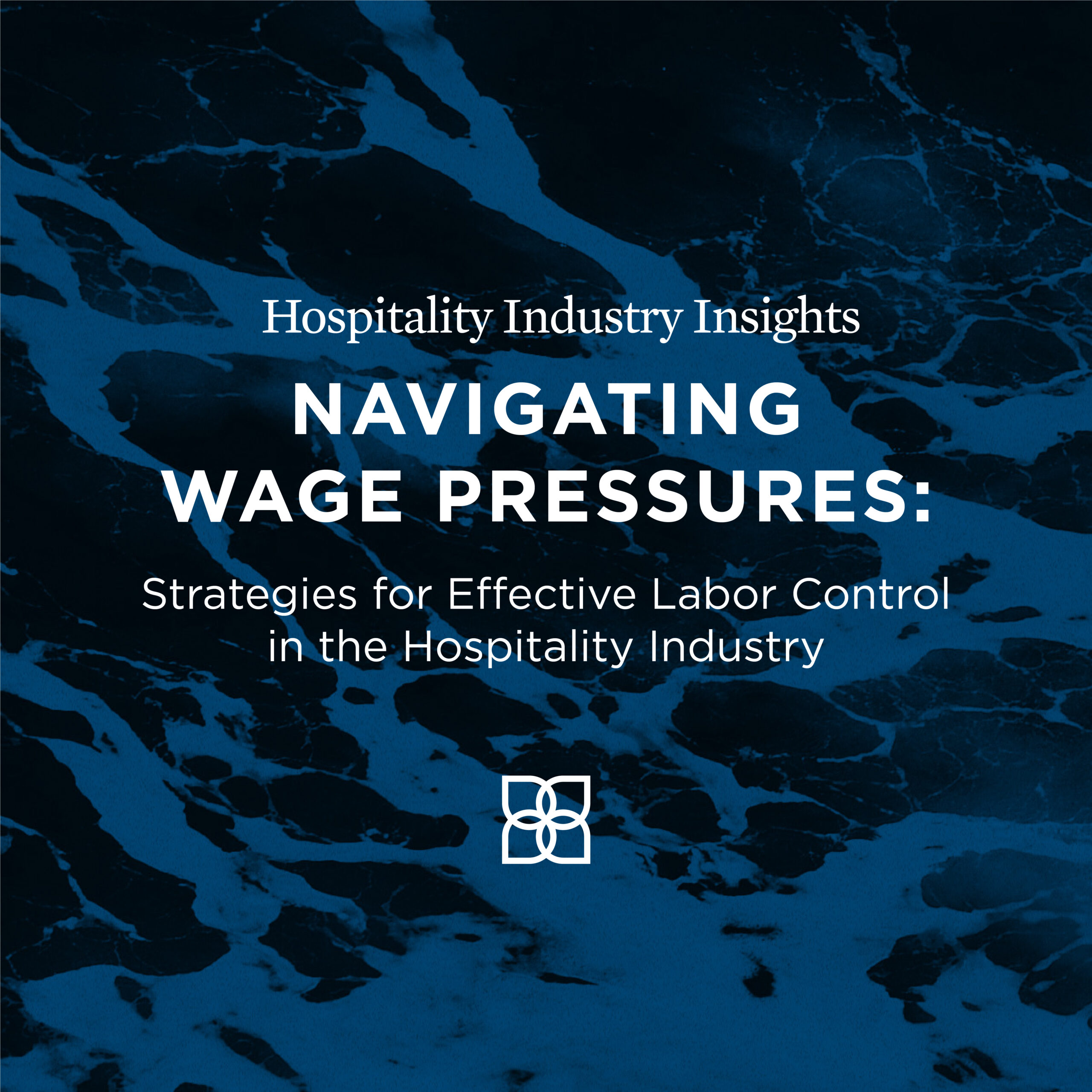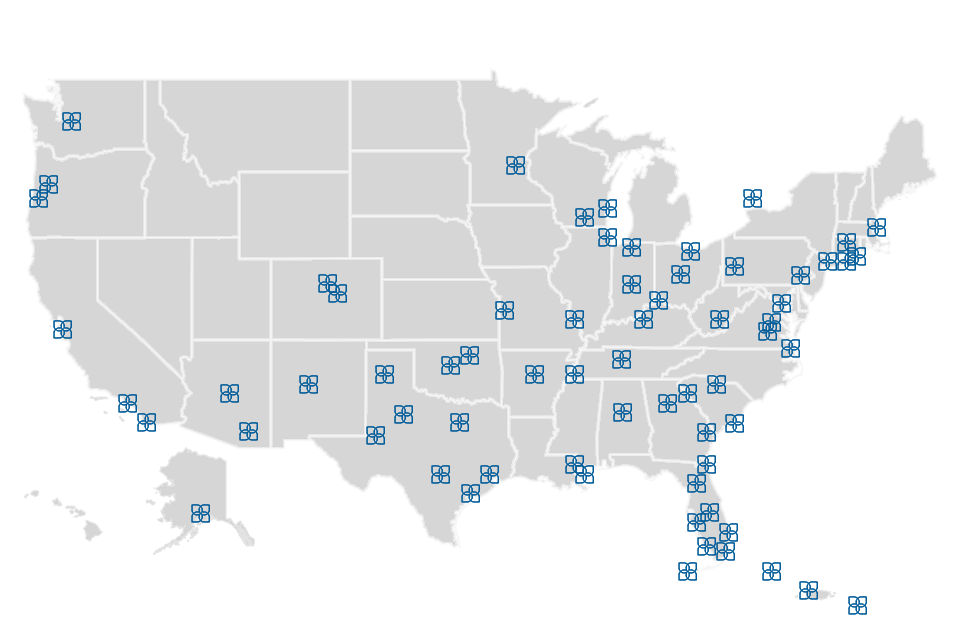
May 23, 2024, by Gary Isenberg, Senior Vice President – Owner Representation
Download a PDF version of Hospitality Industry Insights – Navigating Wage Pressures
In recent years, employers nationwide have experienced escalating wage pressures, primarily fueled by the proliferation of living wage initiatives advocated by certain states, municipalities, unions, and non-profit organizations. Despite the federal minimum wage presently set at $7.25 per hour, many states have enacted higher minimum wages, with venues like the State of California and the District of Columbia pushing $16 to $17 per hour, which fall well short of estimated living wage benchmarks. Traditionally, the lodging industry has compensated entry-level positions at rates near the minimum wage. However, the pandemic-induced labor shortages compelled hoteliers nationwide to raise wages to attract personnel. According to the US Bureau of Labor Statistics, the average hourly pay rate for all hourly leisure and hospitality employees surged from $16.92 in March 2020 to $21.92 in April 2024, representing a 30% increase.
Legislation Poised to Significantly Impact Wage Dynamics
Amidst this living wage pressure, significant federal legislation has emerged, poised to impact the hospitality industry’s wage dynamics significantly. The Department of Labor recently finalized a rule amending the overtime regulation under the Fair Labor Standards Act (FLSA). This rule raises the minimum salary threshold, below which workers must be paid overtime for all hours worked beyond 40 hours in a given workweek. Effective July 1, 2024, the threshold increases to $43,888, escalating further to $58,656 on January 1, 2025, reflecting a substantial 60% increase from the current level of $35,568. Similarly, the minimum threshold for highly compensated employees will rise from the current $107,432 to $132,964 on July 1, 2024, and subsequently to $151,164 on January 1, 2025, representing a more than 40% increase from the current level.
The American Hotel & Lodging Association predicts that this new overtime rule and the resultant cost increases will have severe repercussions for hoteliers, potentially resulting in job losses, limited advancement opportunities for employees, and an increased risk of smaller employers shuttering operations altogether.
Upward Pressure From State and Local Levels
Moreover, alongside federal labor regulations, changes in legislation at the state and local levels have further influenced wage dynamics. Notably, California’s recent enactment of a $20 minimum wage for fast food restaurant employees, effective April 1, 2024, stands out. This represents a 25% increase from the California state minimum wage across all other industries, presently set at $16 per hour. Such targeted industry-specific wage adjustments raise concerns regarding the potential ripple effects if other states and cities follow suit.
With upward pressure on wages showing no signs of abating, effective labor cost control emerges as a critical factor in maintaining profitability within the hospitality industry. To counterbalance recent and anticipated wage increases, hoteliers must review labor controls and ensure the implementation of the following best practices:
- Labor Standards Review
Regularly review staffing guides and labor standards to ensure alignment with current trends and practices. - Flexible Staffing Models
Adopt flexible staffing models, including part-time, seasonal, or contingent workers, to accommodate fluctuating demand without overburdening full-time employees. Cross-training staff in multiple roles enhances flexibility and efficiency during peak periods. - Forecasting and Scheduling
Utilize historical data and advanced scheduling software to accurately forecast labor demand across departments and shifts, facilitating optimal staff allocation. - Performance Metrics
Define key performance indicators (KPIs) for labor productivity, such as revenue per labor hour and guest satisfaction scores, to monitor and evaluate labor management effectiveness. - Inventory Management
Maintain adequate inventory levels of equipment and supplies to prevent productivity disruptions, ensuring seamless operations. - Employee Empowerment
Empower employees through clear expectations, training, and tools, fostering a culture of accountability and teamwork. - Compliance and Regulations
Stay abreast of labor laws and regulations to ensure full compliance, mitigate legal risks, and uphold ethical business practices. - Continuous Improvement
Regularly refine labor management strategies based on feedback and performance data, fostering innovation and efficiency gains.
Conclusion
In conclusion, robust labor cost control processes, coupled with vigilance amidst the evolving regulatory landscape, equip hospitality professionals to navigate the challenges posed by escalating labor costs effectively, safeguarding profitability now and in the future.
The Plasencia Group team is expertly skilled and experienced in maximizing hospitality asset values. Let us put our decades of invaluable knowledge to work for your hotel or suite of hospitality assets. Call us directly at (813) 932-1234 to start a conversation with one of our Owner Representation specialists and explore a myriad of opportunities to enhance the value of your hospitality asset.
For more valuable hospitality industry news and market analysis from The Plasencia Group, be sure to opt in to our news and communications list.


